
All Monster Huntert Games in Order
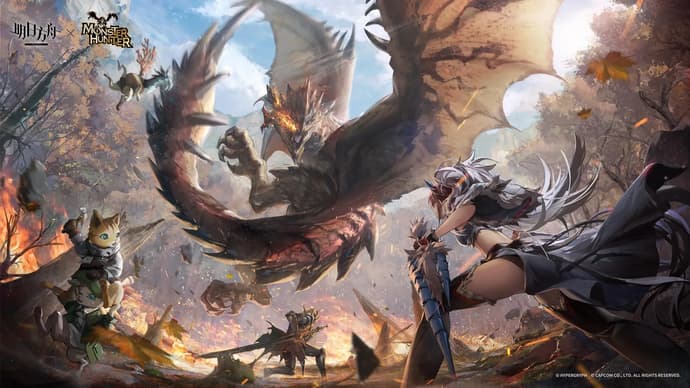
The Monster Hunter series is a legendary franchise from Capcom, which over more than two decades has become one of the most influential in the gaming industry. From its earliest days, Monster Hunter captured attention with its unique blend of hardcore gameplay and engaging co-op. Players take on the role of hunters battling enormous dragon-like monsters across vast, fantastical landscapes, stunningly detailed and immersive. Every battle demands strategic thinking, studying monster behavior, and mastering a variety of weapons.
Over the years, the series has grown from a niche title for a select audience of those seeking something innovative to a global phenomenon. Each installment not only added new features and mechanics but also preserved the traditional elements that fans loved in the original. From innovative vertical combat to hunting styles, open worlds, or new movement systems—the series evolved alongside technology and player demands while staying true to its core.
In this article, we will explore all the main installments of Monster Hunter to trace the franchise's journey from its humble beginnings on the PS2 to its global fame on modern platforms.
Main Series
As of now, the Monster Hunter series consists of 16 games from the main lineup, which we will discuss today. Additionally, this article will cover the most popular spin-offs inspired by this iconic franchise.
Monster Hunter (2004, PS2): The Start of a Legendary Hunt
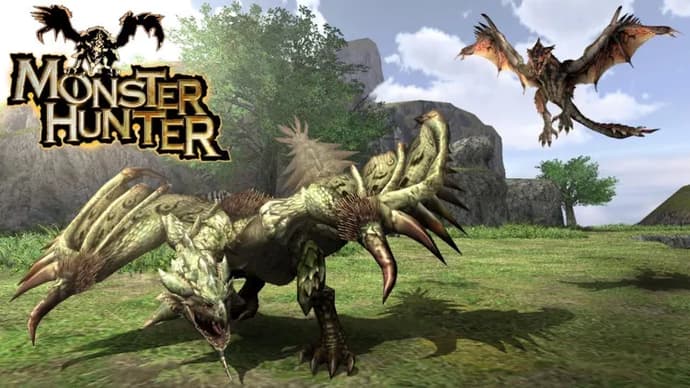
The first Monster Hunter on PlayStation 2 laid the foundation for the future of the legendary series, opening up a world where players became hunters tasked with exploring dangerous lands and tracking deadly monsters. This debut introduced a new standard for hunting mechanics, unique to the genre: each monster battle was epic, requiring patience, strategy, and careful study of enemy behavior.
Monster Hunter featured a variety of weapons and armor that could be upgraded using materials harvested from defeated creatures. This system of resource gathering and constant gear improvement created an entirely new level of grinding and crafting appeal. The game attracted fans seeking a truly hardcore experience, where every accomplishment was hard-earned through the blood, sweat, and claws of vanquished foes. Its difficulty and attention to detail made Monster Hunter a cult classic and set a high bar for future titles in the series.
Monster Hunter G (2005, PS2; later PSP as Monster Hunter Freedom): A New Challenge for Hunters
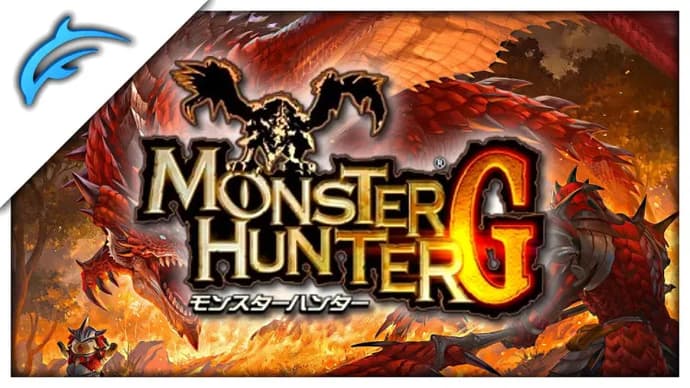
Monster Hunter G expanded the original game, introducing the legendary "G-rank" difficulty level, where even familiar monsters became a trial for the most experienced players. Every battle required precise planning and timing, as even the smallest mistake could be fatal.
The PSP version, known as Monster Hunter Freedom, brought additional improvements, helping attract a Western audience and making the series popular on portable devices. Thanks to this release, Monster Hunter gained a second life and laid the groundwork for the franchise's global success among players worldwide.
Monster Hunter 2 (2006, PS2, Japan): A Living World of Hunting

Monster Hunter 2 revolutionized the series, adding a system of seasons and day-night cycles that dramatically changed monster behavior and quest availability. The game's world felt alive—certain monsters would appear only at specific times or seasons, adding depth and making each hunt unique and thrilling.
This sequel also expanded the weapon arsenal and introduced vibrant new locations, enriching the world with greater detail and variety. Monster Hunter 2 marked a significant leap forward for the franchise, offering players more tactical options and a captivating experience where no two days in the game were alike.
Monster Hunter Freedom 2 (2007, PSP): Hunting On-the-Go
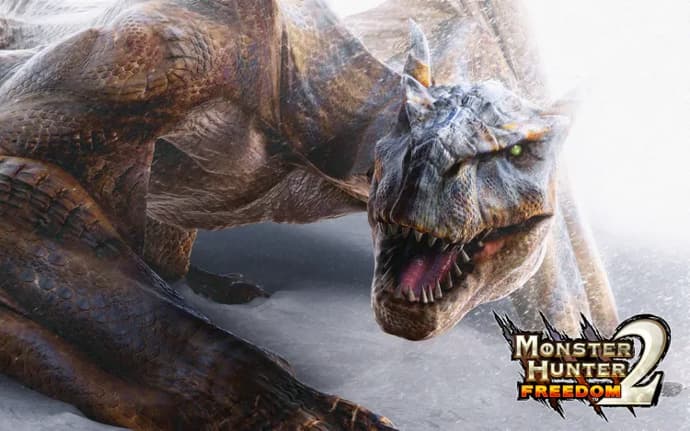
Monster Hunter Freedom 2, the portable version of Monster Hunter 2, won fans over with its convenience and wealth of new content. The game introduced a wide array of weapons, armor, fresh monsters, and thrilling quests that made every hunt exciting.
On PSP, the game gained immense popularity, allowing players to dive into short but intense hunts anytime, anywhere. Thanks to the portability of Freedom 2, hunting became accessible to everyone, making Monster Hunter the perfect choice for mobile gaming and contributing to the series' global success.
Monster Hunter Freedom Unite (2008, PSP): A Grand Adventure with Felynes

Monster Hunter Freedom Unite became a true gem on the PSP, capturing fans' hearts with its massive amount of content. The game featured unique monsters, an expanded selection of equipment, and countless quests, adding depth and variety that kept players engaged for hundreds of hours.
For the first time in the series, loyal companions known as Felynes appeared, aiding in battles and distracting monsters, introducing new tactical options and a strategic layer to gameplay. Freedom Unite set new standards for the series and became a legend on the portable platform, offering an expansive adventure that players could take anywhere.
Monster Hunter Tri (2009, Wii): New Depths and Cross-Play Experience
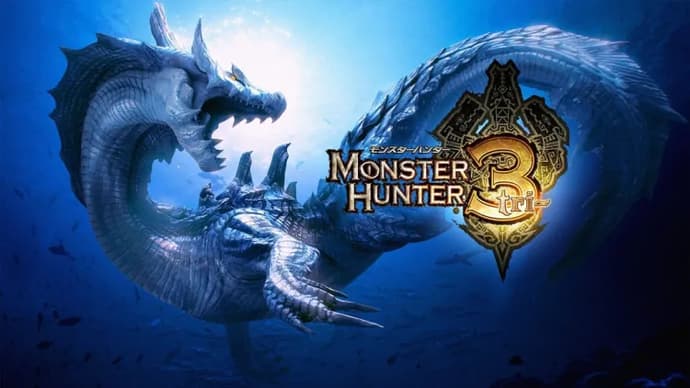
Monster Hunter Tri marked a new era for the franchise, debuting on the Wii and utilizing the console's unique capabilities. For the first time in the series, underwater combat was introduced, adding a new dimension to hunting and delivering entirely new experiences. Battles beneath the waves were thrilling but also challenging due to the specific controls, garnering mixed reactions from players.
Tri also became the first entry in the series to feature cross-online play, allowing hunters to team up for challenging quests regardless of their location. This groundbreaking co-op feature strengthened the Monster Hunter community and transformed hunting into an even more engaging and cooperative adventure.
Monster Hunter Portable 3rd (2010, PSP, Japan): Perfect Balance for the Japanese Audience
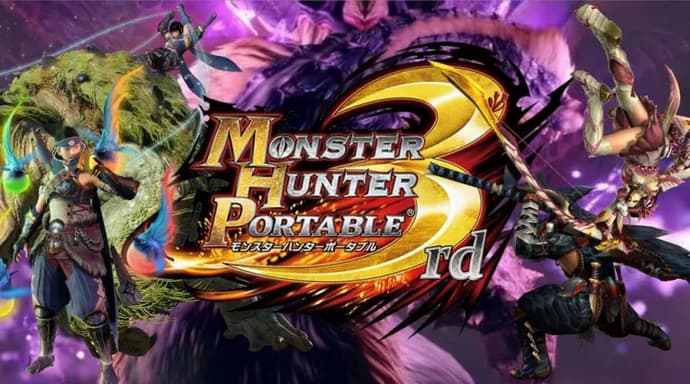
Monster Hunter Portable 3rd served as an enhanced version of Monster Hunter Tri, removing underwater combat and focusing on land-based hunts, a decision that resonated well with players. Instead of aquatic battles, the developers prioritized improved graphics, new monsters, and captivating locations, creating a visually stunning and more dynamic gameplay experience.
The game offered a finely tuned balance that appealed to Japanese audiences, making Portable 3rd one of the most beloved entries in Japan. It delivered players a smooth, harmonious experience filled with new mechanics, cementing its status as a true classic on the portable platform while strengthening the series' fan base.
Monster Hunter 3 Ultimate (2011, 3DS/Wii U): Cross-Platform Hunting on a New Level

Monster Hunter 3 Ultimate expanded and refined the Tri version for Nintendo 3DS and Wii U, offering enhanced graphics and an impressive variety of new monsters. This installment was a true breakthrough, supporting collaborative cross-platform gameplay, allowing players on 3DS and Wii U to hunt together—one of the first such innovations fostering close interaction between players regardless of their device.
The game also added more quests, an expanded arsenal of weapons, and improved underwater combat, adding depth to every hunt. Ultimate raised the quality bar for the series and provided fans with a new level of cooperative experience and diversity, solidifying the franchise's success on both platforms.
Monster Hunter 4 (2013, 3DS, Japan): Reaching New Heights in Hunting
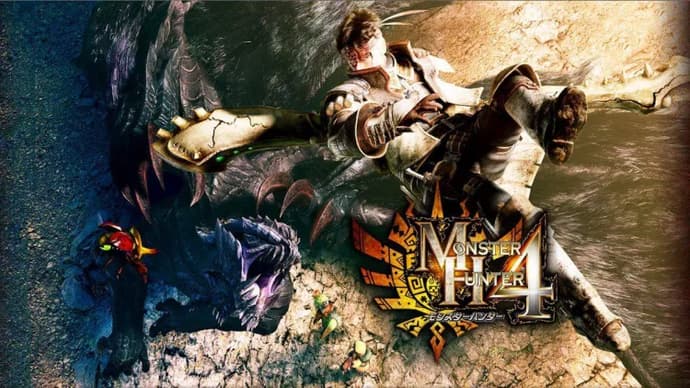
Monster Hunter 4 brought a revolution to the series by introducing vertical elements—jumping, climbing, and aerial attacks—that added more dynamics and variety to the strategies used in monster battles. Players could now attack monsters from above and maneuver through environments with greater freedom, opening up new tactical possibilities and intensifying every encounter.
This installment became one of the most successful games on the Nintendo 3DS in Japan, earning the love of fans thanks to its innovations and captivating gameplay. Its success in Japan was so significant that the game received an international release in the form of an expanded version, further boosting the series' popularity worldwide.
Monster Hunter 4 Ultimate (2014, 3DS): A Global Hit and Series Benchmark
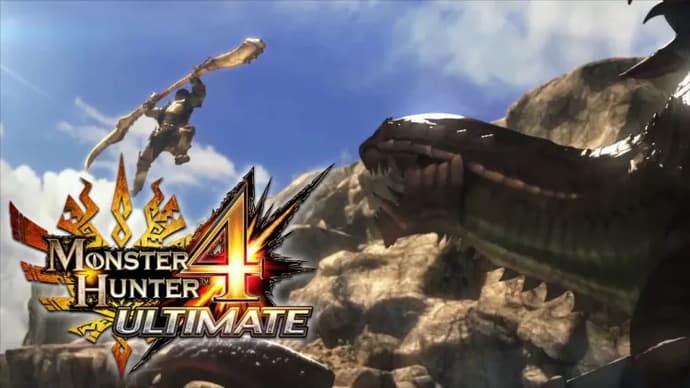
Monster Hunter 4 Ultimate was an updated and expanded version of Monster Hunter 4 that became available internationally for the first time. The game introduced a wealth of new content, from thrilling quests to a variety of monsters, making it one of the most content-rich entries in the series. With dynamic gameplay and improved mechanics, 4 Ultimate offered players endless opportunities for thrilling hunts.
Acclaimed as one of the best games in the series, 4 Ultimate not only solidified the franchise's position but also attracted a massive global audience, turning Monster Hunter into a true international phenomenon.
Monster Hunter Generations (2015, 3DS): A Tribute to the Series' History and Customization
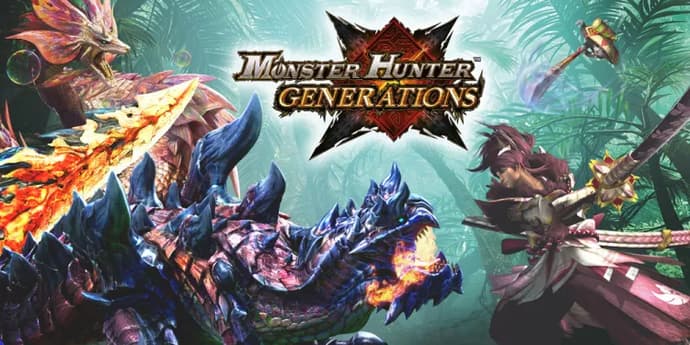
Monster Hunter Generations was a true celebration for fans, combining the best elements of previous entries and paying homage to the series' long history. Iconic monsters, legendary locations, and familiar weapon types returned, creating a nostalgic atmosphere for veteran players.
The game introduced unique hunting styles, allowing players to customize their combat system to suit their playstyle, adding depth and personalization to battles. Each weapon type gained unique abilities, opening up even more tactical options and letting hunters express themselves in combat. Generations became a milestone in the series, offering players a rich and diverse legacy of Monster Hunter in a fresh package.
Monster Hunter Generations Ultimate (2017, 3DS and Switch): A Legacy Expanded on the Big Screen
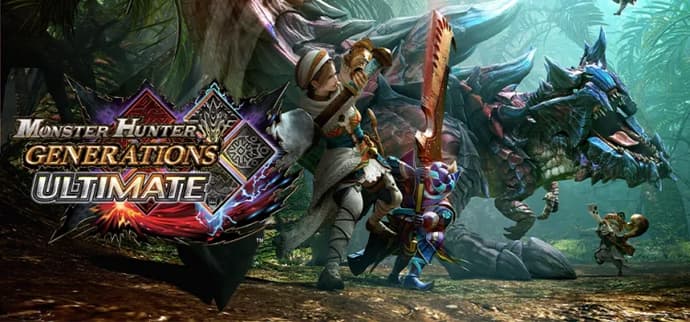
Monster Hunter Generations Ultimate expanded upon the original Generations, adapted for the Nintendo Switch. This version offered fans even more: new monsters, additional difficulty levels, and fresh hunting opportunities, significantly enriching the gaming experience and attracting many new players.
Its release on the Switch allowed fans to enjoy the franchise in high resolution on a big screen while maintaining the convenience of portable gaming. Ultimate brought together the best of Monster Hunter's legacy, offering endless hunting opportunities anywhere and anytime, making it a true hit among fans and a new pinnacle in the series' history.
Monster Hunter: World (2018, PS4/Xbox One, later PC): Evolution and Global Success
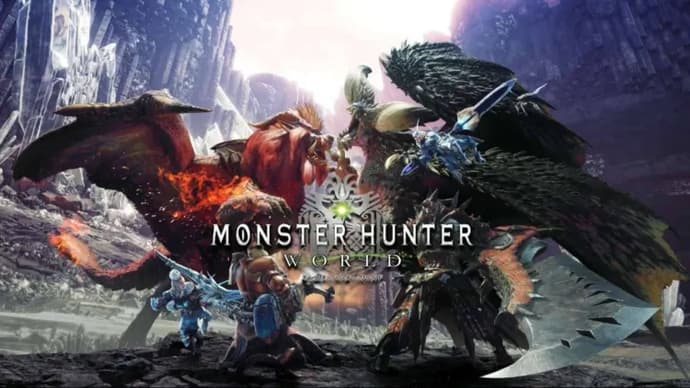
Monster Hunter: World was a true revolution for the series, offering fans seamless zones and a fully open world that united vast wildlands with a living ecosystem. In this world, not only did hunters influence their surroundings, but the fauna itself actively participated in the hunting process: wild monsters could interfere in battles, creating unpredictable scenarios and unique moments.
The game stood out with improved graphics, smooth animations, and intuitive gameplay elements, making it accessible to both seasoned players and newcomers. World introduced tutorial missions and mechanics to attract a broader audience, and the results exceeded expectations—it became Capcom’s best-selling game of all time, drawing in a huge influx of new players and popularizing Monster Hunter worldwide. Numerous awards and record-breaking sales made it not just another entry in the series but a phenomenon in the gaming world.
Monster Hunter World: Iceborne (2019): Icy Challenges and a Hardcore Return
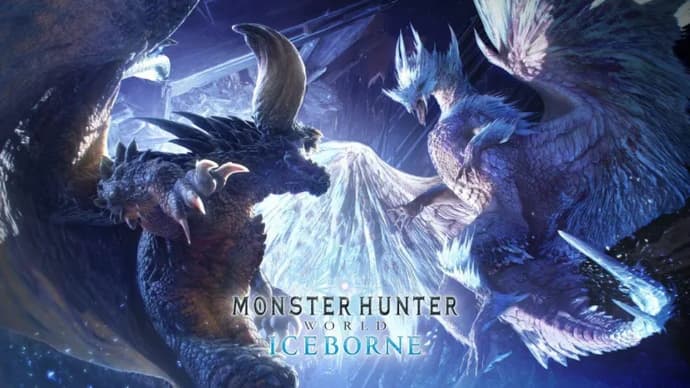
Monster Hunter World: Iceborne was a massive expansion that added a harsh icy region to the World universe and brought back the true spirit of challenges for loyal fans. Players ventured into snowy landscapes filled with new, dangerous monsters whose attacks and behaviors added fresh complexities to the gameplay.
In addition to its extensive content, Iceborne introduced the Master Rank—a mode for those seeking hardcore challenges in the vein of the series' classic entries. The expansion also brought enhanced weapon types, unlocking new tactical possibilities in combat, further diversifying every battle. Iceborne significantly expanded the gameplay, offering both new and experienced hunters unique encounters and serving as a fitting conclusion to the Monster Hunter World era, leaving a lasting impact on the series.
Monster Hunter Rise (2021, Switch; later PC): Japanese Mythology and Freedom of Movement
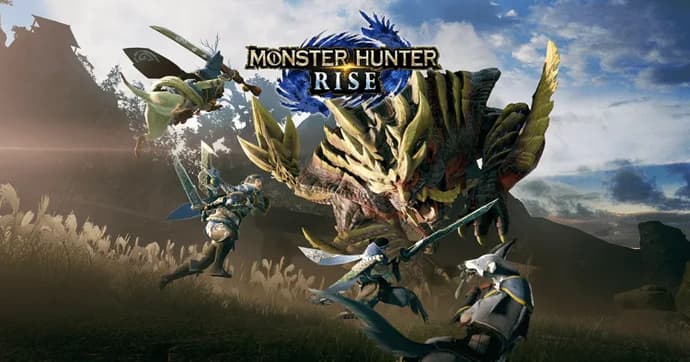
Monster Hunter Rise brought the spirit of Japanese mythology to the series alongside innovative gameplay, thanks to a new tool—the Wirebug, which made movement fast, vertical, and incredibly agile. Hunters could now leap into the air, battle monsters from above, and find unexpected positions for attacks, bringing more dynamics and freedom of action to combat.
Rise also introduced a unique mechanic for controlling large monsters, allowing players to harness these giant's power against other creatures. These innovations made Monster Hunter Rise an exciting and fresh experience, adding more depth to the series and strengthening its success on a new platform, where tradition and innovation met in perfect balance.
Monster Hunter Rise: Sunbreak (2022): A New Level of Challenges and Mastery
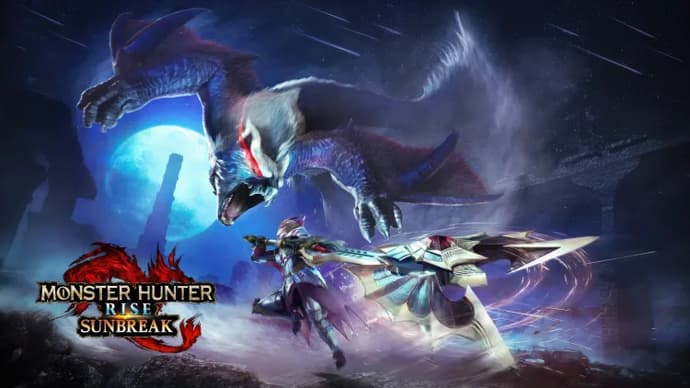
Monster Hunter Rise: Sunbreak greatly expanded the original game, introducing new thrilling regions, even fiercer monsters, and higher-difficulty quests. The expansion allowed for character behavior adjustments, enabling players to tailor their combat style to personal preferences, adding diversity to battle strategies.
Sunbreak became a popular expansion aimed at experienced players seeking true hardcore challenges. Tough battles, new content, and engaging quests made Sunbreak a standout addition, bringing even more depth to Monster Hunter Rise and immersing veteran hunters in a world of new trials.
Notable Spin-offs
The Monster Hunter spin-offs were created as a way to expand the universe and attract a new audience. While the main series focuses on challenging hunts, mechanics, builds, grinding, and combat strategy, the spin-offs offered more accessible and diverse formats, ranging from turn-based RPGs to village management.
These games allowed Capcom to experiment with genres, deepen the lore, and showcase the Monster Hunter world from new perspectives, such as fostering friendships with monsters or adapting gameplay for mobile devices. Thanks to these projects, the franchise attracted more players and became versatile, offering something for everyone. Here are the most popular spin-offs of the Monster Hunter series:
Monster Hunter Diary: Poka Poka Airou Village (2010, PSP, Japan): The World of Felynes and a Charming Adventure

Monster Hunter Diary: Poka Poka Airou Village is a unique and charming spin-off of the series, where players take on the management of a Felyne village, inhabited by adorable cat-like creatures. Unlike traditional hunting gameplay, this game focuses on village development and management, creating a cozy and peaceful corner within the Monster Hunter world.
This approach captured the hearts of the Japanese audience, offering players a relaxing and heartwarming adventure filled with care for the cute characters and their daily lives. Poka Poka Airou Village is a warm departure from the series, providing a tranquil perspective on the Monster Hunter universe.
Monster Hunter Stories (2016, 3DS): Friendship with Monsters and a New Take on the Universe
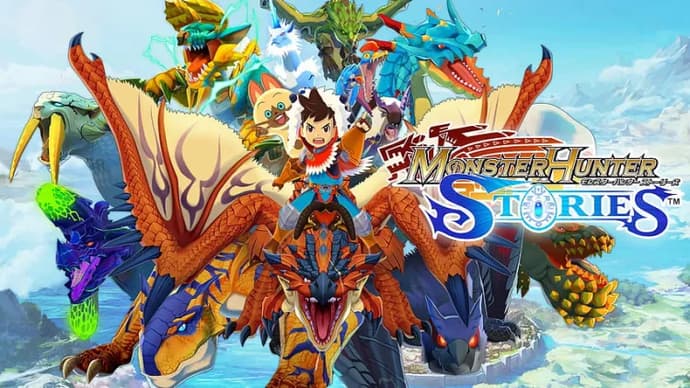
Monster Hunter Stories brought a fresh perspective to the franchise, moving away from traditional gameplay towards a classic RPG with turn-based combat. In this anime-styled game, hunting took a back seat to friendship—players could befriend monster companions, train them, and utilize their abilities in battles.
This innovative mechanic attracted a younger audience, offering a lighthearted and engaging story where the power of friendship with monsters became the key to success. Monster Hunter Stories not only opened the Monster Hunter universe to new players but also demonstrated that bonds can be as powerful as battles.
Monster Hunter Stories 2: Wings of Ruin (2021, Switch, PC): A Journey into the World of Monsters and Legends

Monster Hunter Stories 2: Wings of Ruin continued the story of the original, immersing players in an even deeper and more colorful world of friendship and adventure. This RPG provided more options for nurturing and training monster companions, allowing players to form unique bonds with each creature and unlock new tactical combinations in turn-based battles.
With improved graphics and expanded exploration opportunities, Wings of Ruin became a hit among RPG fans, offering an atmospheric storyline and thrilling journey. The game enriched the Monster Hunter universe, giving players the freedom to explore it not only as hunters but as guardians of legendary creatures, creating an unforgettable adventure for both veteran and new fans of the series.
Monster Hunter Explore (2015, Mobile, Japan): Hunting at Your Fingertips
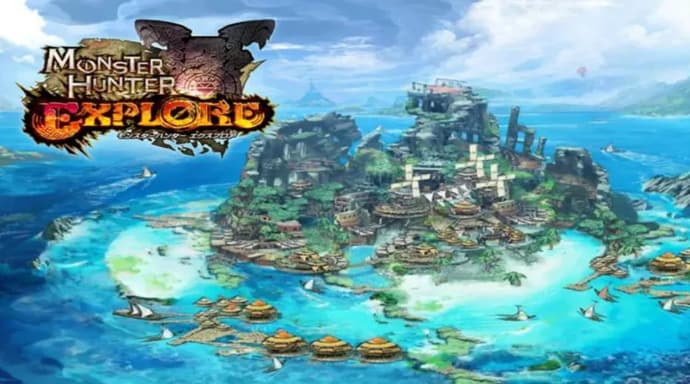
Monster Hunter Explore brought the beloved universe to mobile devices, offering a streamlined hunting experience designed for short sessions and convenient controls. The game allowed players to embark on quick missions, preserving the spirit of Monster Hunter while making it accessible for those on the go or seeking quick gameplay moments during their daily lives.
This mobile adaptation quickly gained popularity among Japanese users, who could enjoy the Monster Hunter world on their smartphones, experiencing hunting adventures at their fingertips. Explore is an excellent example of how adapting for mobile platforms can expand the audience while retaining the core traits of the original series.
Monster Hunter Online (2013, PC, China): An Epic MMORPG in the World of Hunters
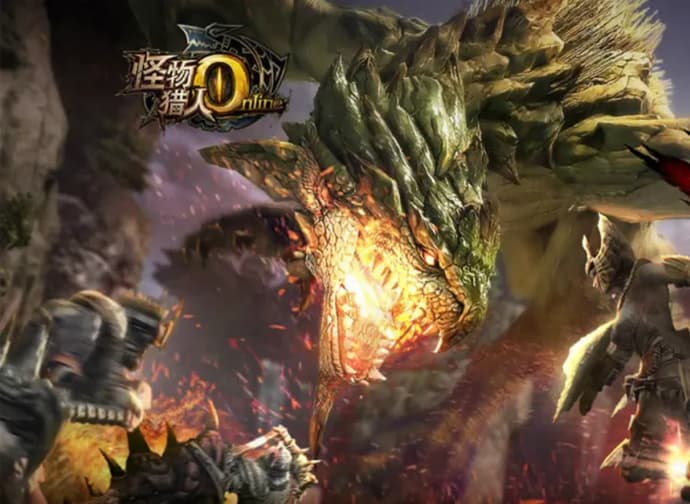
Monster Hunter Online brought the Monster Hunter universe into the MMORPG genre, offering players an open world to explore, rich with opportunities to upgrade gear and team up for large-scale raids. Developed specifically for the Chinese market, the game provided a unique experience for fans, allowing deeper immersion into the hunting world, interaction with other hunters, and epic battles against giant monsters.
Monster Hunter Online introduced a new format, retaining familiar elements of the series while expanding them within a multiplayer framework. Despite its success, the servers were shut down in 2019, leaving players with vivid memories of adventures and teamwork in this unique project.
Monster Hunter Frontier (2007–2019, Multiple Platforms, Japan): The Legend of Online Hunting
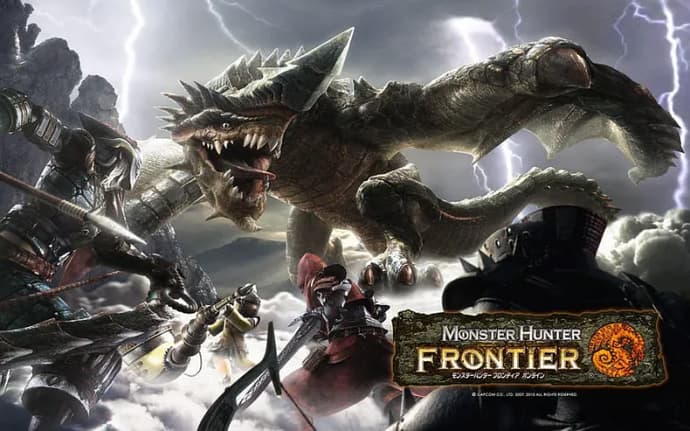
Monster Hunter Frontier became the longest-running online game in the series, offering fans a unique hunting experience that lasted over a decade. The game featured exclusive monsters, unique regions, and original mechanics not found in any other installment, making each battle special.
Frontier garnered a loyal fanbase in Japan, becoming a cult favorite for Monster Hunter enthusiasts who spent years exploring its vast landscapes and honing their skills. Despite the servers' closure in 2019, Monster Hunter Frontier left a bright mark in the franchise's history and in the hearts of fans, symbolizing years of dedication and innovation in the online hunting genre.
Conclusion
These games illustrate Monster Hunter's journey from a hardcore hunting experience to a global phenomenon spanning various platforms, genres, and gameplay styles. With each new release, the series enriched its mechanics, added depth to its battles, and created increasingly vibrant and dynamic worlds. The recently announced Monster Hunter: Wilds marks another milestone in the series' evolution, offering players even more open worlds and unique mechanics for interacting with ecosystems. From classic hunting to full-scale MMORPGs, mobile games, and story-driven RPGs featuring interactions with monsters, Monster Hunter has forged a unique path, expanding its audience and captivating millions of players worldwide.

Kirill is a writer of articles and blogs at eGamersWorld, having joined the team in 2024. His primary focus is analytics and crafting content about esports. With years of experience in gaming, Kirill brings deep industry insights to deliver high-quality and engaging materials.
 Best Supports In Dota 2 Patch 7.40Discover the best supports in Dota 2 Patch 7.40 - strengths and win rate.
Best Supports In Dota 2 Patch 7.40Discover the best supports in Dota 2 Patch 7.40 - strengths and win rate. Every CS2 & CSGO Major Champions: From 2013 to 2025Overview of Every CS2 & CSGO Major Champions: Tournament Formats, Venues, and Most Thrilling Moments
Every CS2 & CSGO Major Champions: From 2013 to 2025Overview of Every CS2 & CSGO Major Champions: Tournament Formats, Venues, and Most Thrilling Moments How To Complete Reduced to Rubble in Arc Raiders: Step-by-Step GuideArc Raiders walkthrough for Reduced to Rubble, with Blue Gate routes, photo objectives, exact map positions, and puzzle context.
How To Complete Reduced to Rubble in Arc Raiders: Step-by-Step GuideArc Raiders walkthrough for Reduced to Rubble, with Blue Gate routes, photo objectives, exact map positions, and puzzle context.
 How To Complete A Toxic Trail in Arc Raiders: Step-by-Step GuideArc Raiders walkthrough for A Toxic Trail, detailing Dam Battlegrounds objectives, exact locations, and puzzle context from the Cold Snap update.
How To Complete A Toxic Trail in Arc Raiders: Step-by-Step GuideArc Raiders walkthrough for A Toxic Trail, detailing Dam Battlegrounds objectives, exact locations, and puzzle context from the Cold Snap update.



